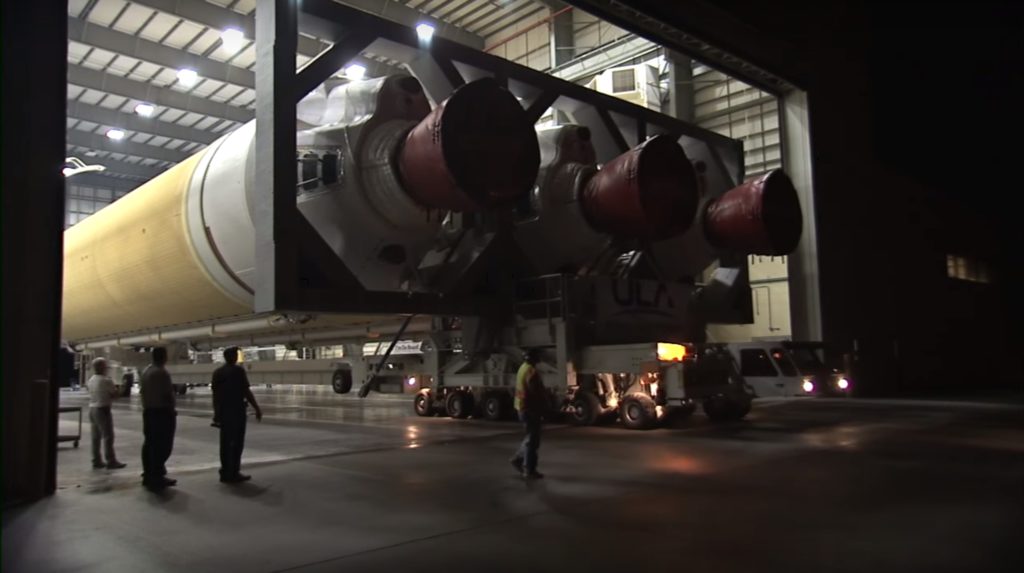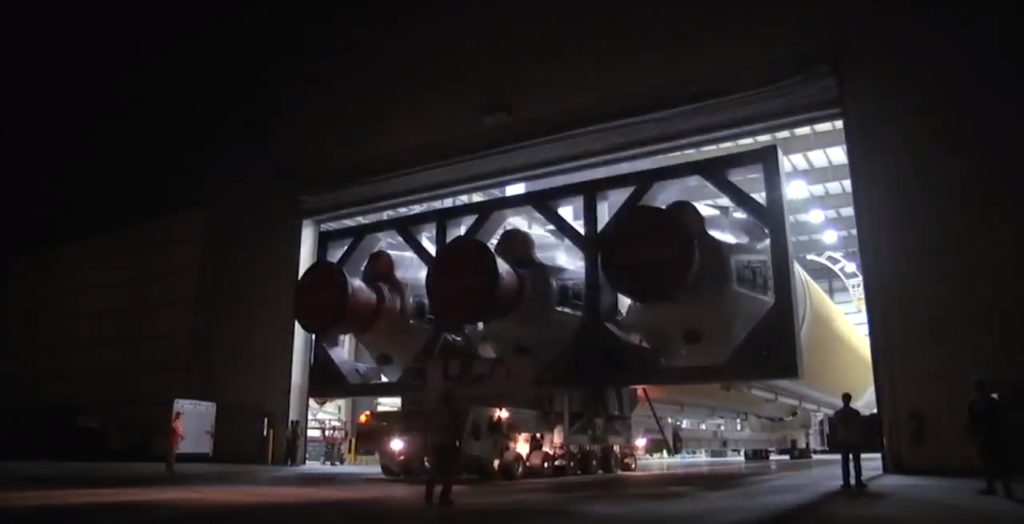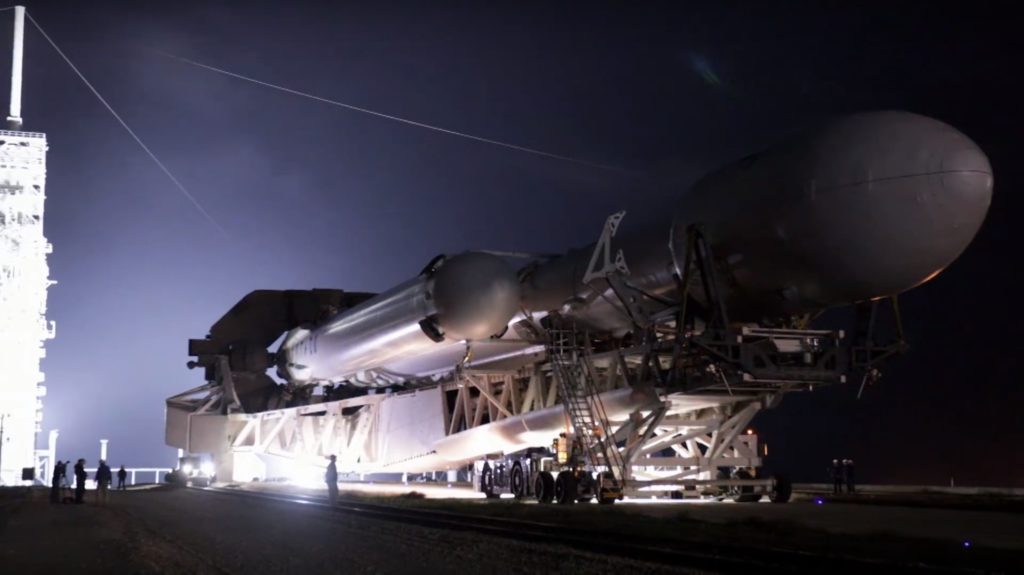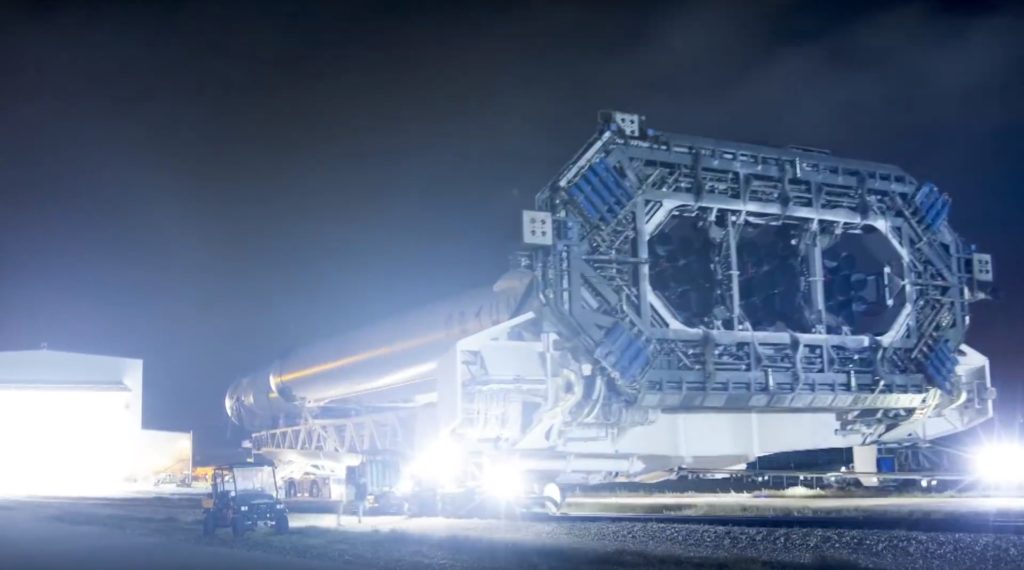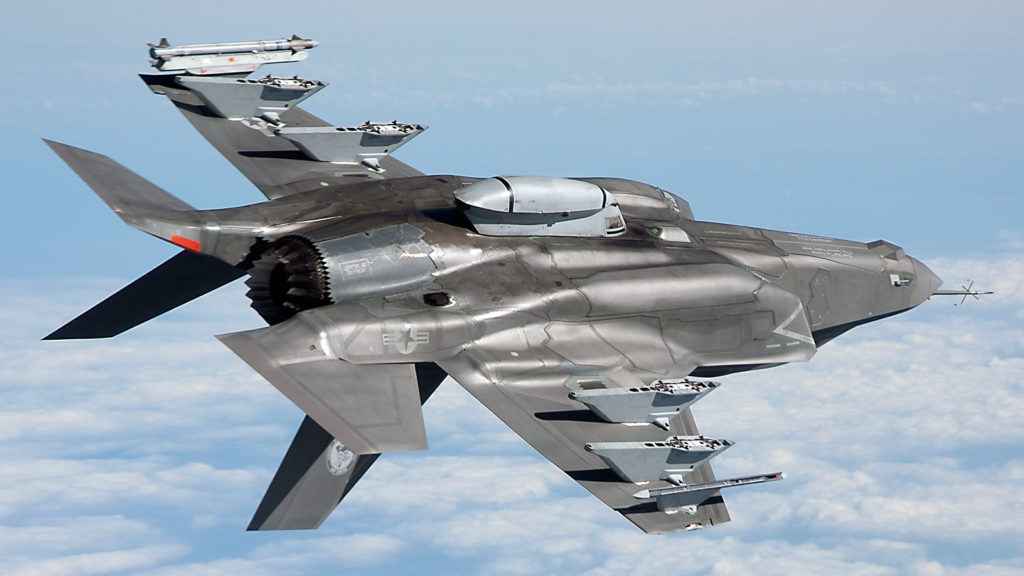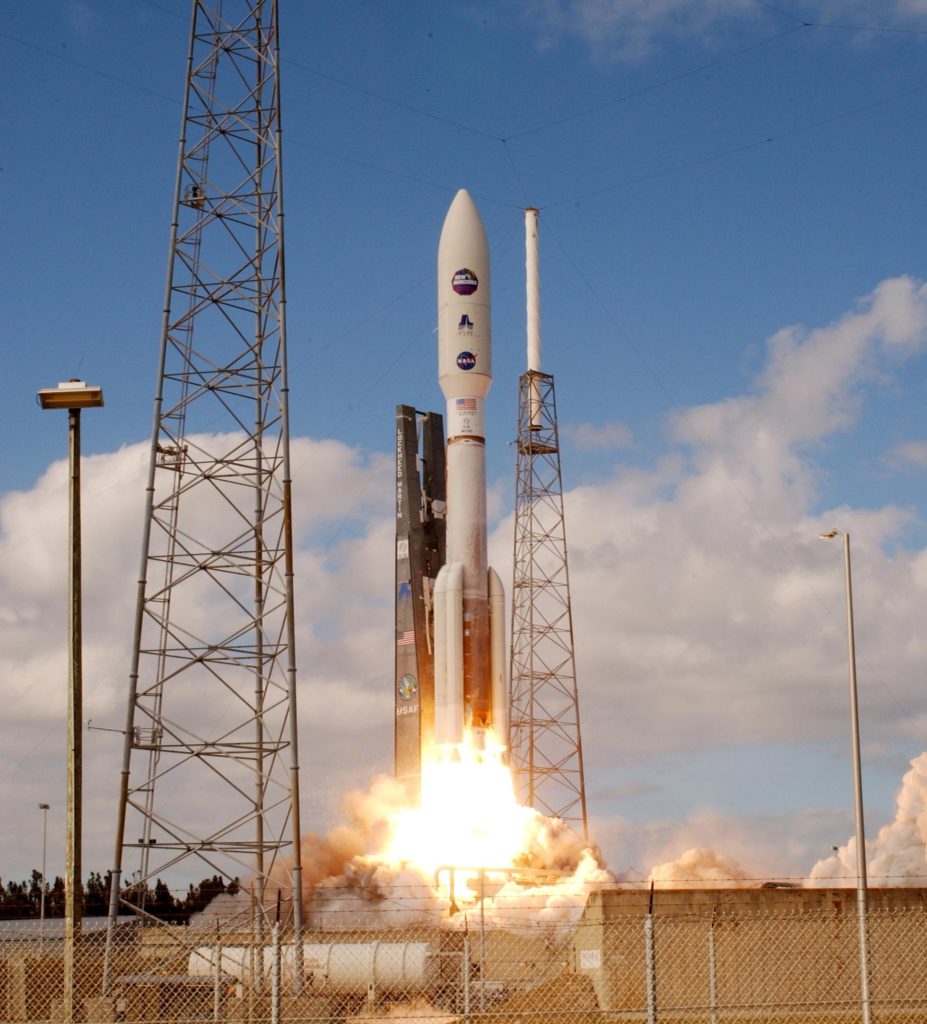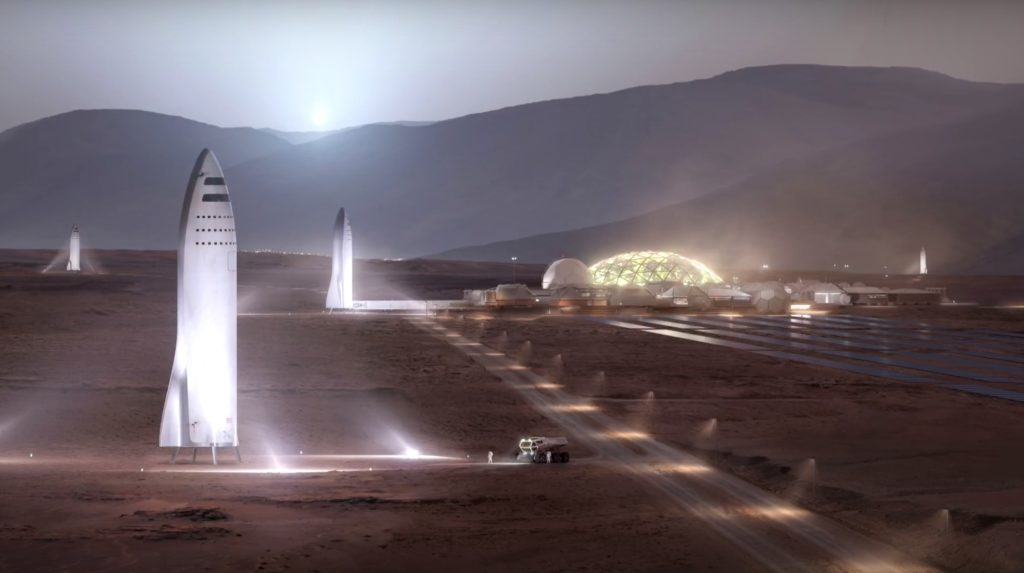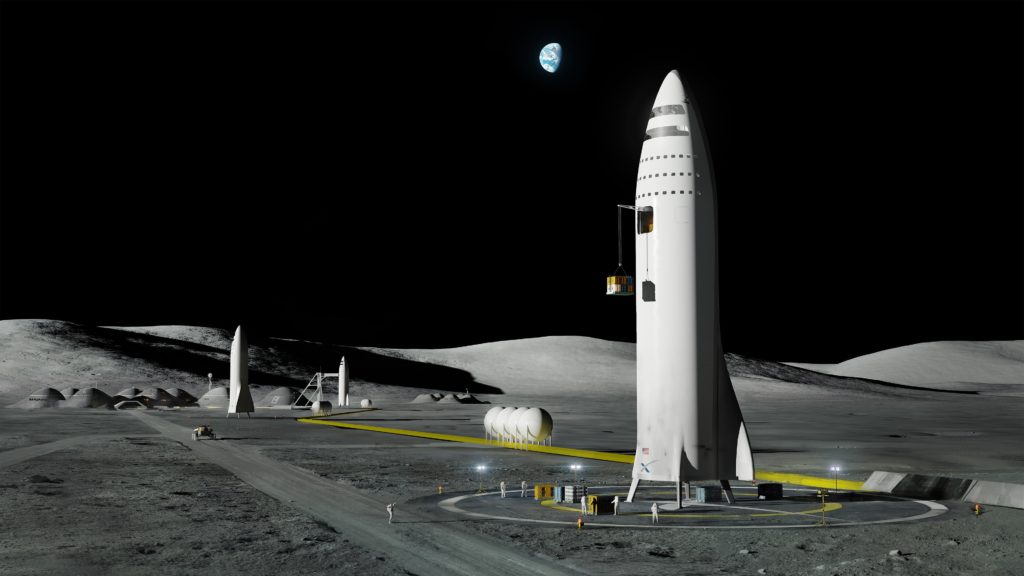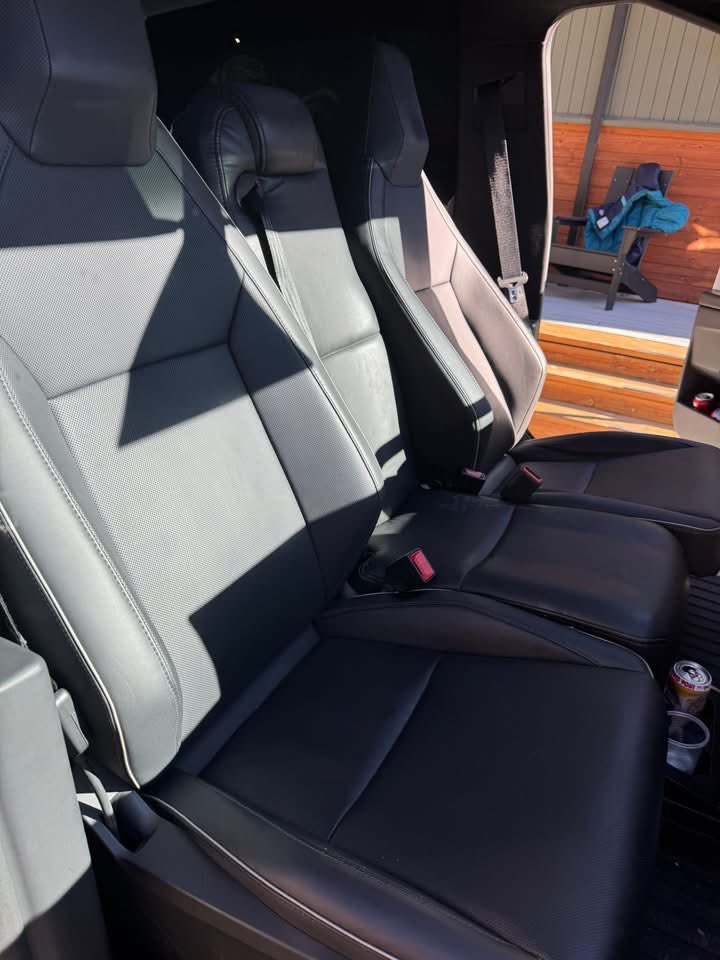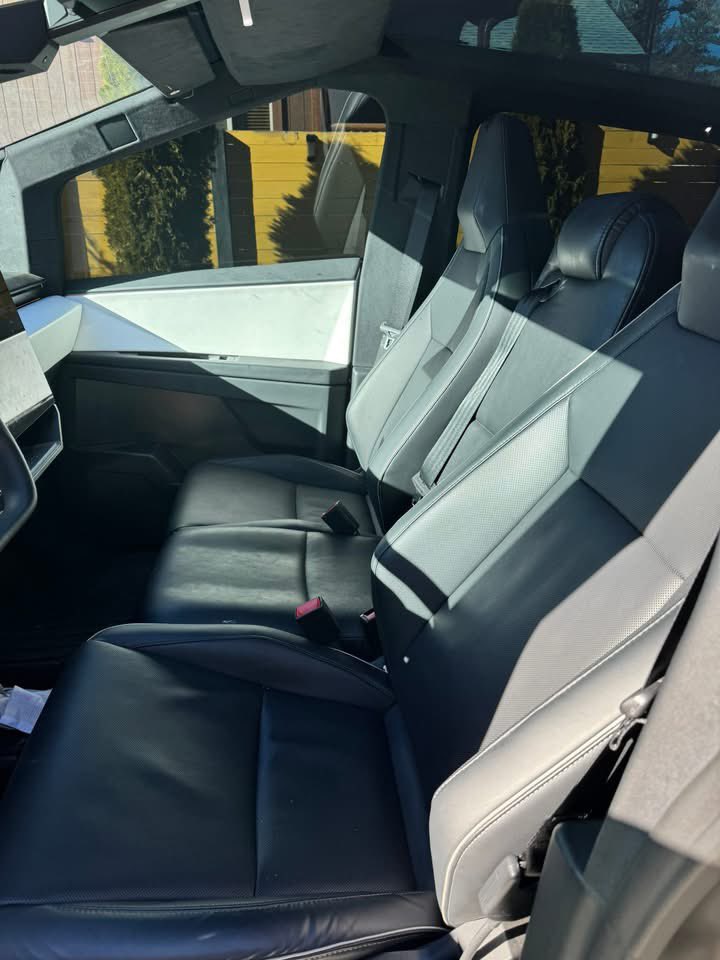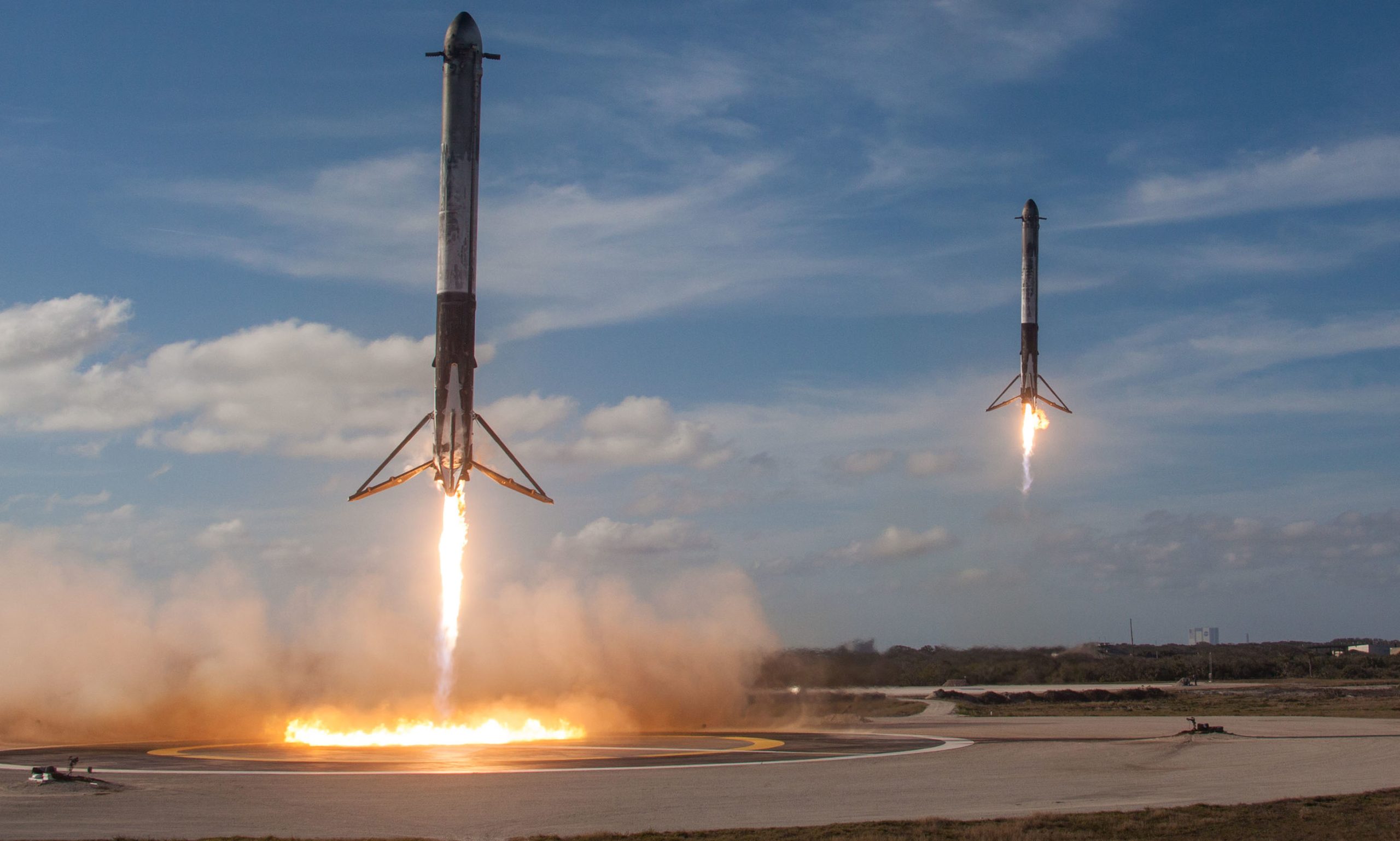
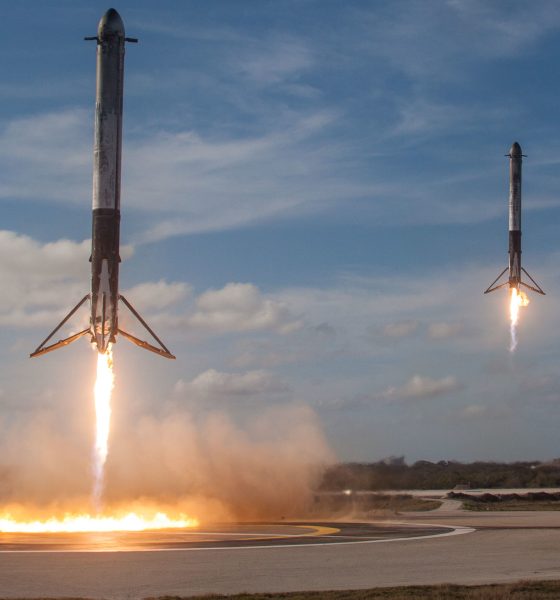
News
How SpaceX Falcon Heavy undercuts its competition three-fold
Following the stunningly successful debut of SpaceX’s giant Falcon Heavy rocket, the spaceflight fan community and industry have been abuzz with attempts to estimate Falcon Heavy’s true price as an expendable or partially expendable launch vehicle. Thankfully, CEO Elon Musk appears to have been interested enough to fill in the knowledge gaps concerning the rocket’s full range of prices and took to Twitter to answer several questions.
Among several other intriguing comments that I will cover later on, Musk revealed that a fully expendable Falcon Heavy would cost approximately $150 million, while a partially expendable FH would sport 90% of the performance while expending the center stage and landing the side boosters at sea rather than on land. In that latter mode of operation, a Falcon Heavy launch would cost about $95 million, whereas unlocking the final 10% of performance with a fully expandable configuration would be priced around $150 million. While $90-150 million is undeniably a huge amount of cash in any sense, Falcon Heavy delivers far more performance for multiple times less than the available competition.
- ULA’s Delta IV Heavy rolls out to the pad for a launch in 2016. Note the people in the bottom left for a sense of scale. (ULA)
- ULA’s Delta IV Heavy rolls out to the pad for a launch in 2016. Note the people in the bottom left for a sense of scale. (ULA)
- The fully-integrated Falcon Heavy rolls out to Pad 39A. For vertical integration, think of this… but vertical. (SpaceX)
- DIVH and FH are approximately the same size, although FH is far denser. (SpaceX)
The only real competition for Falcon Heavy is the United Launch Alliance’s (ULA) Delta IV Heavy rocket, a triple-core launch vehicle with nine total launches under its belt since its 2004 debut. Aside from one test launch for NASA, all of DIVH’s operational flights have been tasked with launching uniquely heavy military payloads to uniquely high orbits – both of which require an exceptionally capable rocket. Designed as a fully expendable vehicle, ULA’s Heavy is capable of launching ~29,000 kg to low Earth orbit (LEO) and ~14,000 kg to geostationary transfer orbit (GTO), whereas the fully reusable Falcon Heavy has a max payload of about 23,000 kg to LEO and 8,000 kg to GTO.
However, if Musk’s claim of 10% performance loss as a partially expendable launcher holds true, the story changes quite a bit. In its fully expendable configuration (call it the Delta IV Heavy config), Falcon Heavy is a beast of a rocket, quoted at ~64,000 kg to LEO and 26,700 kg to GTO. Subtract 10-25%, and Falcon Heavy still trounces the Delta rocket, all while costing well under $150 million, and probably closer to $100 million. According to a late-2017 report from the US Government Accountability Office, Delta IV Heavy costs as much as $400 million per launch, although ULA CEO Tory Bruno responded to Musk’s claim of $400-600 million earlier this morning with a figure of $350 million for the rocket.
Hey @elonmusk , congrats again your heavy launch. Clarification: Delta IV Heavy goes for about $350M. That’s current and future, after the retirement of both Delta IV Medium and Delta II. She also brings unique capabilities, At least until we bring Vulcan on line.
— Tory Bruno (@torybruno) February 12, 2018
Such a high price is not exceptionally surprising, if only for the fact that Delta IV Heavy launches as infrequently as it does. With an average cadence of one launch every 18 months or 1.5 years, the technical expertise and facilities required to design, build, and operate the DIVH must remain employed regardless of whether the rocket launches. Although Delta was previously a family of rockets, thus enabling some of its designers and builders to cross-populate, the final non-Heavy Delta launch occurred just a handful of weeks ago. Short of layoffs, this means that ULA’s Delta expertise are now solely working to build and operate a rocket with approximately seven launches scheduled between 2018 and 2023 – in short, $400 million is quite plausibly on the low end of the rocket’s actual cost, backend included. Both ULA and the Department of Defense are aware, however, that Delta IV Heavy is the only rocket currently capable of launching some of the missions desired and required by the National Reconnaissance Office (NRO), and are thus at least partially willing to swallow the vehicle’s high cost. SpaceX’s Falcon Heavy is bound to introduce some much-needed competition into the stagnant market after its highly successful introduction, but it will likely be a year or more before the new rocket is certified to launch the same highly sensitive and expensive payloads as ULA’s Delta IV Heavy.
How are SpaceX’s prices so low?
Still, this does not answer the “how” of SpaceX’s prices. What can even begin to explain Delta IV Heavy’s 200-400% premium over Falcon Heavy? The best answer to this crucial question was by no coincidence also one of the main reasons that Elon Musk created SpaceX. From the very beginning, SpaceX pursued a slim and flexible organizational structure, prioritized hiring brilliant and motivated engineers with hands-on experience, and encouraged the practice of thinking from first principles. Dolly Singh, head of SpaceX’s talent acquisition in the mid-2000s, described the rocket startup’s atmosphere like so:
We searched for candidates with a proven history of building and breaking things…candidates who had been tinkering with hardware systems for years…I knew the people who filled my open positions would be put to the test every day and would be asked to meet heretofore impossible targets. We looked for people with a history of defeating the odds, who had made careers of overcoming obstacles.
https://www.instagram.com/p/BVarZZSgfIP/
Birds of an organizational feather
In essence, this organizational philosophy has led SpaceX to become vertically integrated to the extent that is effective without comparison in the global aerospace industry. Vertical integration is a term used to describe the practice of bringing aspects of development and manufacturing in-house, whereas a company not attempting to integrate vertically would instead contract and subcontract out their design and manufacturing needs wherever possible. Musk is hard set on this philosophy: if SpaceX can do it in-house more cheaply than a contractor, they will become their own supplier. Companies like ULA – a cooperation between Lockheed Martin and Boeing – have the better part of a century of experience as heavyweights in the US military-industrial complex, a relationship that has quite literally changed processes of acquisition and created alternate realities of pricing.
Thick with armies of lobbyists, those military-industrial complex titans have help to direct the US down a path that has solidified truly insane concepts as the status quo. A cost-plus contracting framework almost universally applied in the procurement of military technology means that companies are nearly awarded for delays and cost overruns. Possibly even more absurd, the euphemistic strategy of “concurrency” espoused by those same titans has somehow convinced the upper echelons of US defense procurement that it is a good and preferable strategy to fully fund and build technologies en mass before any testing has been. Unsurprisingly, these two philosophies have led to years of delays and huge cost overruns as contractors and their subcontractors are forced to repair or modify extremely complex technological systems once bugs and problems are inevitably discovered down the road. The F-35 Lightning II – developed by Lockheed Martin – is perhaps the most famous example with near-weekly tales of abject failure – gun systems that are years late and inaccurate to the point of uselessness, extremely buggy and flawed software that the jet literally cannot function without, an oxygen system that frequently gives its pilots hypoxia and grounds the entire F-35 fleet, among dozens of other incredible missteps – and all for the most expensive fighter aircraft yet developed in the US. Tyler Rogoway, one of the best practicing defense journalists, has covered the debacle of concurrency and cost-plus contracting for many years and is a recommended read for anyone interested in the above industries.
- While it may look damn cool, the F-35 is easily the biggest government procurement debacle in all of human history. (Lockheed Martin)
- Operated by the same company responsible for the F-35, Atlas 5 is a highly reliable and equally expensive rocket. (ULA)
Now, back to spaceflight…
Parting from this partial diversion, the purpose of this brief history of military procurement is to provide some level of context as to why NASA and its spaceflight contractors act as they do, where they derived their organizational structures and philosophies, and why SpaceX is different.
Famously, a NASA study in 2010 estimated the cost of SpaceX’s Falcon 9 development to be approximately $4 billion under variables representative of NASA’s own R&D and engineering culture, or $1.7 billion using a more commercial, fixed-cost strategy. When SpaceX offered to cooperate with the addition of their internal data on Falcon 9’s cost, the same model’s estimate plummeted to less than $600 million, representing a truly extraordinary overestimate of SpaceX’s development costs, while SpaceX’s data showed approximately $300 million of investment in the first version of Falcon 9. Simply put, NASA’s cost estimates were off by more than an order of magnitude (PDF) – SpaceX successfully developed an unprecedented orbital-class rocket for mere pennies to NASA’s dollar.
Famously, a NASA study in 2010 estimated the cost of SpaceX’s Falcon 9 development to be approximately $4 billion, while SpaceX’s own data showed approximately $300 million of investment in the first version of Falcon 9. Simply put, NASA’s cost estimates were off by more than an order of magnitude.
More recently, Elon Musk has stated that SpaceX invested $1 billion or more in the development of reusability for Falcon 9, and this large investment can almost entirely explain why Falcon 9’s pricing has remained essentially unchanged over its seven years of life, even if it was already the cheapest rocket in its performance class. Despite the recent introduction and rapid routinization of operational reuse, SpaceX has not publicly changed the launch price from its $62 million base. Although there have been slight acknowledgments of small discounts from customers flying on reused boosters, the general theme is that reused rockets have not meaningfully lowered the cost of purchasing a launch. In practice, the cost of refurbishment and reuse of the first several Falcon 9 boosters was likely on par with the cost of a new booster, but the real reason for the lack of magnitudes of cost reduction lies in SpaceX’s desire to recoup some or all of the capital it invested in reusability. As the company matures its reuse expertise, the cost can be expected to plummet – Cargo Dragon’s reuse, for example, reportedly saved SpaceX 50% of the cost of a new capsule, and Falcon 9 is almost certainly far easier and thus cheaper to refurbish and refly.
The quote is from a 2015 hearing held by the Armed Services Committee: "I don't know how to build a $400 million rocket. Rather than ask how am I less expensive than ULA, I don't understand how ULA is as expensive as they are."
— Robin Seemangal (@nova_road) February 12, 2018
While payload fairings have turned out to be harder to recover than anticipated and Falcon 9’s second stage is likely to remain expendable for the foreseeable future, those components only comprise about 30% of the rocket’s price. If SpaceX can cut the cost of reuse to maybe 10-20% of the cost of a new booster, the remaining 30-60% of a new launch’s $62 million translates to approximately $20-35 million of profit for each reused launch. If, say, the company aims to fly flight-proven boosters on half of their launches in 2018, that translates into as many as 15 launches and as much as $500 million – or half of the $1 billion investment – recouped in a single year. With the introduction of Falcon 9 Block 5 in a few months, SpaceX will soon be flying an iteration of their workhorse rocket that is far faster, easier, and cost-effective to reuse. Ultimately, depending on how much of their initial investment SpaceX intends to recover, the huge profit margins they can derive from reuse could be redirected to drastic price cuts for the customer. More realistically, the company will likely lower its prices enough to ensure that their launch business is brutally competitive, and thus use those profit margins to begin heavily investing in BFR (Big F. Rocket), BFS (Big F. Spaceship), and the company’s loftier interplanetary goals more generally.
- Starship and a Martian city, circa 2017. (SpaceX)
- SpaceX’s 2017 BFS (now Starship) delivers cargo to a large lunar base. (SpaceX)
In fact, given that SpaceX President Gwynne Shotwell has quite consistently targeted early 2019 for the beginning of prototype BFS testing, SpaceX is probably already putting a significant proportion of their profits into Mars-focused R&D. As 2018 progresses, barring any unseen speed bumps, the funds available to SpaceX are bound to explode, and huge progress will likely begin to be made on actual hardware intended to enable colonies on the Moon and Mars.
Follow along live as launch photographer Tom Cross and I cover these exciting proceedings as close to live as possible.
Teslarati – Instagram – Twitter
Tom Cross – Twitter
Eric Ralph – Twitter

Cybertruck
Tesla Cybertruck undergoes interior mod that many owners wanted
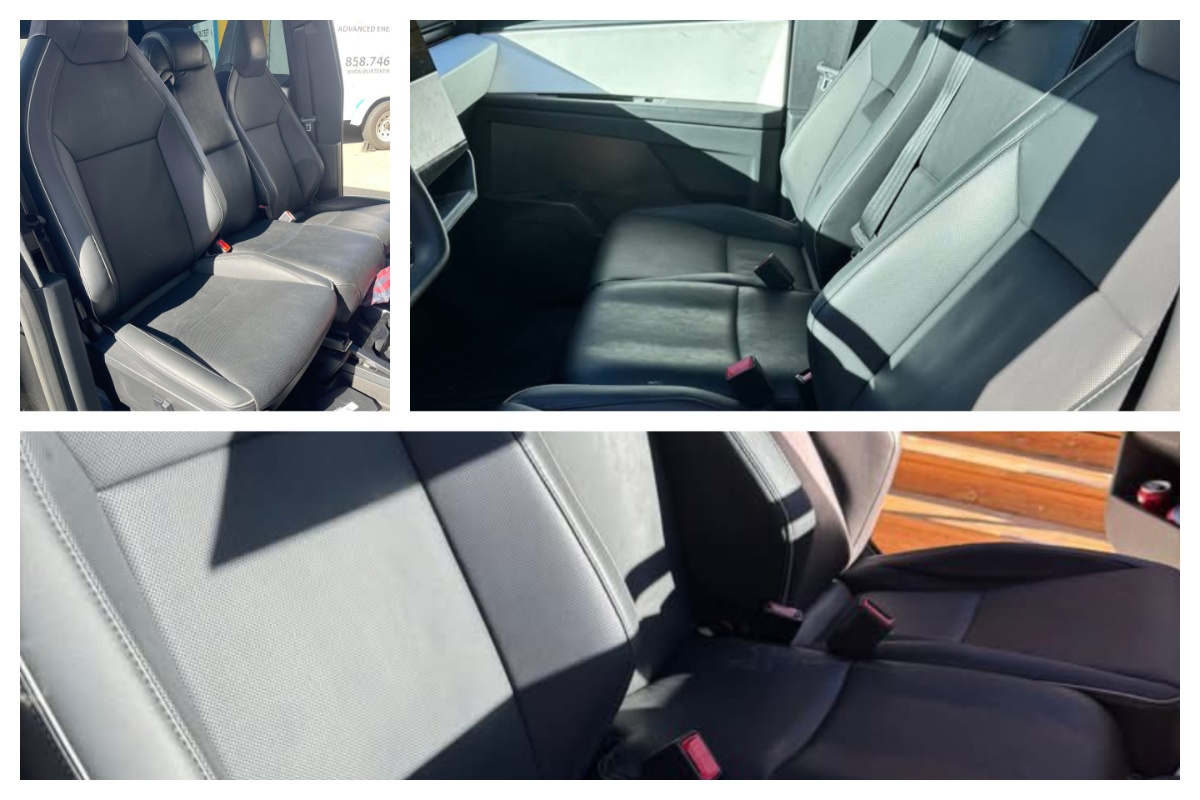
Tesla Cybertruck is significantly different from traditional pickups on the market in a lot of ways. However, one feature that was recently modified with its interior was a highly requested characteristic that is present in other trucks, but was void from Cybertruck.
Tesla went with a five-seat configuration with Cybertruck: two in the front and three in the back. The spacious interior is matched with plenty of storage, especially up front, as a pass-through, center console, and other storage options, but some Tesla fans wanted something different: bench seating.
Bench seating is popular in many full-size pickups and allows three passengers to sit up front. The middle seat is usually accompanied by a fold-down storage unit with cupholders.
Tesla decided to opt for no bench seating up front, despite the fact that it equipped bench seating in the unveiling in 2019. Interior photos from the unveiling event from nearly six-and-a-half years ago show Tesla had originally planned to have a six-seat configuration.
This was adjusted after the company refined the design:
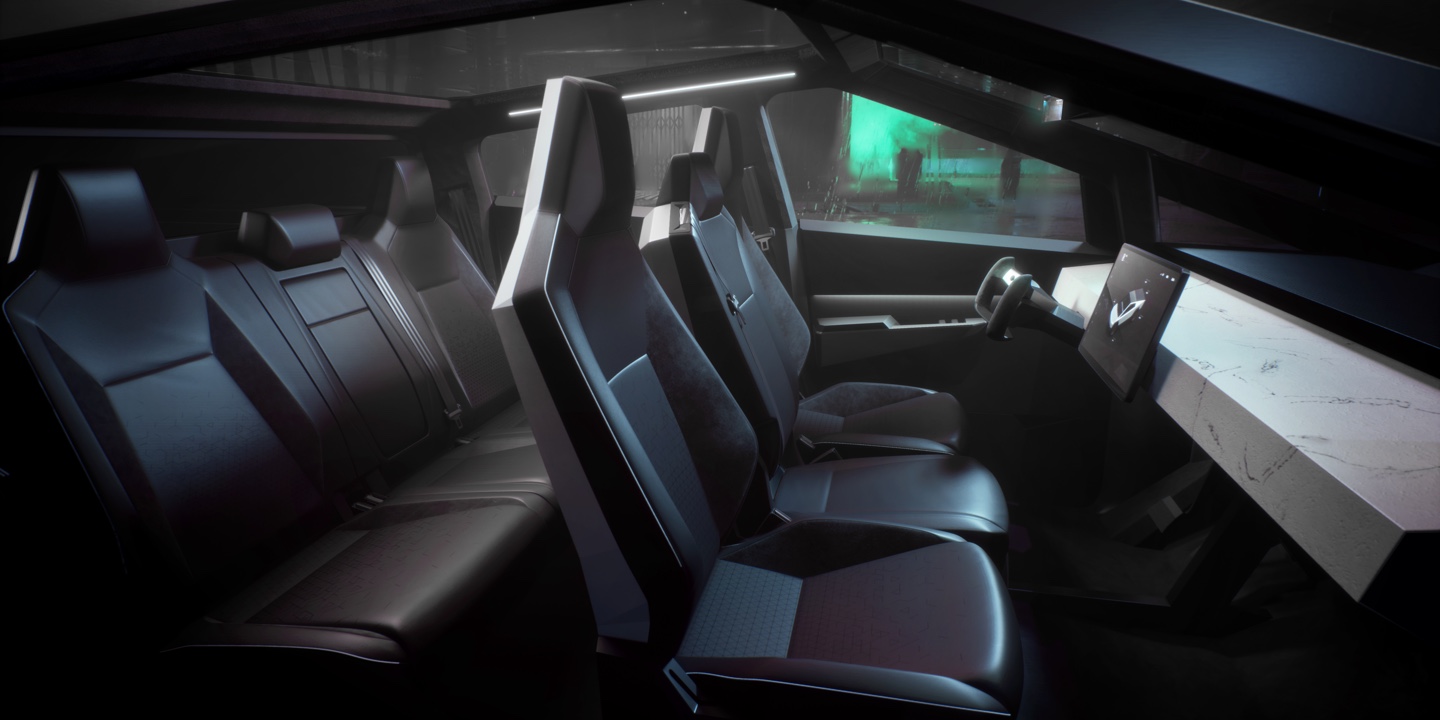
(Tesla Cybertruck interior configuration in 2019)
Despite Tesla abandoning this design, it does not mean owners were willing to accept it. One owner decided to modify their Tesla Cybertruck interior to equip that third seat between the driver’s and passenger’s thrones.
The fit is snug, and while it looks great, it is important to remember that this does not abide byregulations, as it would require an airbag to be technically legal. Please do not do this at home with your own Cybertruck:
- Credit: @blueskykites
- Credit: @blueskykites
- Credit: @blueskykites
The Cybertruck is a popular vehicle in terms of publicity, but its sales have been underwhelming since first delivered to customers back in 2023. It’s hard to believe it’s been out for two-and-a-half years, but despite this, Tesla has not been able to come through on its extensive order sheet.
This is mostly due to price, as Cybertruck was simply not as affordable as Tesla originally planned. Its three configurations were initially priced at $39,990, $49,990, and $69,990. At release, Cybertruck was priced above $100,000.
This priced out many of those who had placed orders, which is the main reason Cybertruck has not lived up to its expectations in terms of sales. The adjustments to the specific features, like the removal of the bench seat, likely did not impact sales as much as pricing did.
This modification shows some creativity by Tesla owners, but also shows that the Cybertruck could always be the subject of a potential refresh to include some of these features. Tesla routinely adjusts its vehicle designs every few years, so maybe the Cybertruck could get something like this if it chooses to refresh its all-electric pickup.
Elon Musk
Tesla CEO Elon Musk drops massive bomb about Cybercab
“And there is so much to this car that is not obvious on the surface,” Musk said.

Tesla CEO Elon Musk dropped a massive bomb about the Cybercab, which is the company’s fully autonomous ride-hailing vehicle that will enter production later this year.
The Cybercab was unveiled back in October 2024 at the company’s “We, Robot” event in Los Angeles, and is among the major catalysts for the company’s growth in the coming years. It is expected to push Tesla into a major growth phase, especially as the automaker is transitioning into more of an AI and Robotics company than anything else.
The Cybercab will enable completely autonomous ride-hailing for Tesla, and although its other vehicles will also be capable of this technology, the Cybercab is slightly different. It will have no steering wheel or pedals, and will allow two occupants to travel from Point A to Point B with zero responsibilities within the car.
Tesla shares epic 2025 recap video, confirms start of Cybercab production
Details on the Cybercab are pretty face value at this point: we know Tesla is enabling 1-2 passengers to ride in it at a time, and this strategy was based on statistics that show most ride-hailing trips have no more than two occupants. It will also have in-vehicle entertainment options accessible from the center touchscreen.
It will also have wireless charging capabilities, which were displayed at “We, Robot,” and there could be more features that will be highly beneficial to riders, offering a full-fledged autonomous experience.
Musk dropped a big hint that there is much more to the Cybercab than what we know, as a post on X said that “there is so much to this car that is not obvious on the surface.”
And there is so much to this car that is not obvious on the surface
— Elon Musk (@elonmusk) January 2, 2026
As the Cybercab is expected to enter production later this year, Tesla is surely going to include a handful of things they have not yet revealed to the public.
Musk seems to be indicating that some of the features will make it even more groundbreaking, and the idea is to enable a truly autonomous experience from start to finish for riders. Everything from climate control to emergency systems, and more, should be included with the car.
It seems more likely than not that Tesla will make the Cybercab its smartest vehicle so far, as if its current lineup is not already extremely intelligent, user-friendly, and intuitive.
Investor's Corner
Tesla Q4 delivery numbers are better than they initially look: analyst
The Deepwater Asset Management Managing Partner shared his thoughts in a post on his website.

Longtime Tesla analyst and Deepwater Asset Management Managing Partner Gene Munster has shared his insights on Tesla’s Q4 2025 deliveries. As per the analyst, Tesla’s numbers are actually better than they first appear.
Munster shared his thoughts in a post on his website.
Normalized December Deliveries
Munster noted that Tesla delivered 418k vehicles in the fourth quarter of 2025, slightly below Street expectations of 420k but above the whisper number of 415k. Tesla’s reported 16% year-over-year decline, compared to +7% in September, is largely distorted by the timing of the tax credit expiration, which pulled forward demand.
“Taking a step back, we believe September deliveries pulled forward approximately 55k units that would have otherwise occurred in December or March. For simplicity, we assume the entire pull-forward impacted the December quarter. Under this assumption, September growth would have been down ~5% absent the 55k pull-forward, a Deepwater estimate tied to the credit’s expiration.
“For December deliveries to have declined ~5% year over year would imply total deliveries of roughly 470k. Subtracting the 55k units pulled into September results in an implied December delivery figure of approximately 415k. The reported 418k suggests that, when normalizing for the tax credit timing, quarter-over-quarter growth has been consistently down ~5%. Importantly, this ~5% decline represents an improvement from the ~13% declines seen in both the March and June 2025 quarters.“
Tesla’s United States market share
Munster also estimated that Q4 as a whole might very well show a notable improvement in Tesla’s market share in the United States.
“Over the past couple of years, based on data from Cox Automotive, Tesla has been losing U.S. EV market share, declining to just under 50%. Based on data for October and November, Cox estimates that total U.S. EV sales were down approximately 35%, compared to Tesla’s just reported down 16% for the full quarter. For the first two months of the quarter, Cox reported Tesla market share of roughly a 65% share, up from under 50% in the September quarter.
“While this data excludes December, the quarter as a whole is likely to show a material improvement in Tesla’s U.S. EV market share.“
